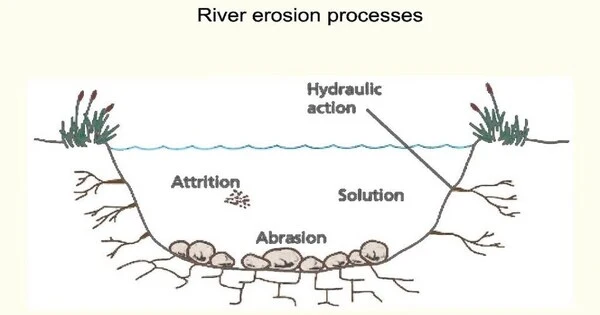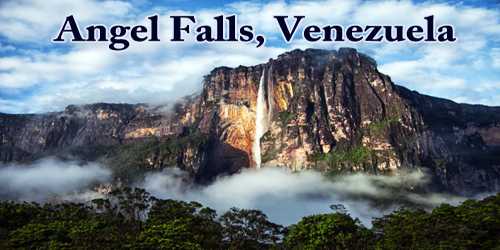The process by which flowing water, usually in the form of a river or stream, wears away the Earth’s surface and transports sediment from one location to another is referred to as river erosion. It is one of the primary forces responsible for the long-term shaping of the Earth’s landscape.
River erosion is important in shaping landscapes. It can form valleys, canyons, and gorges over time. It helps to form river deltas and floodplains, which are often fertile agricultural areas. Excessive erosion, on the other hand, can cause problems such as land loss, destruction of riverbank habitats, and sedimentation in reservoirs and waterways.
River erosion occurs through several mechanisms, including hydraulic action, abrasion, solution, and attrition.
- Hydraulic Action: When moving water dislodges and lifts sediment from the riverbed or banks, this happens. Water’s sheer force can erode and undercut riverbanks, causing them to collapse.
- Abrasion: This process, also known as corrasion, involves the rubbing or scraping of sediment particles against the riverbed or banks. As the river transports sediment downstream, it acts like sandpaper, gradually wearing away the rocks and soil it comes into contact with.
- Solution: Certain rocks, such as limestone, are prone to dissolution in water. When rivers flow over soluble rocks, they can chemically break them down and transport the dissolved minerals away, contributing to erosion.
- Attrition: This occurs when sediment particles carried by the river collide with each other, resulting in their gradual wearing down and rounding. As particles become smaller and more rounded, they are easier for the river to transport downstream.
Various techniques can be employed to mitigate river erosion. These include bank stabilization measures such as planting vegetation, constructing retaining walls, or using erosion-control fabrics. Channelization, which involves modifying the course of a river, is another method used to control erosion and manage flood risks.
River erosion can have a wide range of effects on the landscape. It can carve valleys, canyons, and gorges through resistant rocks over time. The rate of erosion is influenced by the river’s speed and volume, as well as the types of rocks and sediments present. Human activities such as deforestation, construction, and channelization can also significantly alter natural river systems and hasten erosion processes. Understanding and managing river erosion is therefore critical for maintaining ecosystem health, protecting infrastructure, and reducing the risk of flooding.
















